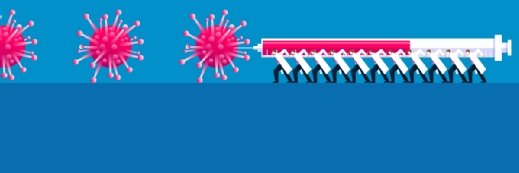
Getty Images/iStockphoto
Congolese health workers and patients benefit from Couchbase database
Belgian public health consulting firm AEDES has worked with a local partner in the Democratic Republic of Congo to deliver a health information management system based on Couchbase
Brownouts, heat and humidity are among the environmental conditions that make electronic patient records a tall order in sub-Saharan Africa.
Patient records tend to be kept on paper, and patients have to repeat themselves over and over. And healthcare centres and hospitals have little visibility into their own business – the numbers of patients they treat, income and costs.
Belgian public health consulting firm AEDES has been using NoSQL database Couchbase with low-cost servers and Android phones to deliver an electronic patient health record system in Kinshasa and other parts of the Democratic Republic of Congo.
Loïc Vaes, project manager and e-health specialist at AEDES, encapsulates his role at the agency as delivering “robust and adequate solutions that help improve healthcare in a low-resources environment”.
AEDES (l’Agence Européenne pour le Développement et la Santé) was founded in 1985 as an offshoot of the Belgian MSF (Médecins sans Frontières). MSF found it was having to leave war and other disaster zones that required more ongoing support, says Vaes.
The Congolese project originally came out of Vaes’ master’s thesis on computer science in 2014, undertaken at the Free University of Brussels, and linked to Cemubac, Le Centre Scientifique et Medical de l’ULB [Université Libre de Bruxelles]. Cemubac was founded in 1938 to extend the university’s influence in the Belgian colonies of Congo, Rwanda and Burundi. Today it is called ULB-Coopération.
Vaes describes the AEDES system, CERHIS, as a hospital information system designed to work in environments with constraints such as unstable power supply, low familiarity with information technologies, lack of internet connection and limited financial resources.
Data is recorded on connected Android devices instead of being copied in multiple paper registers scattered throughout a hospital. Information that was fragmented and difficult to exploit is thus available for efficient use by the healthcare team and for the production of national health indicators, says Vaes.
Read more about data management and IT for healthcare and aid in Africa
- How the Path health organisation is fuelling its anti-malaria programme in Zambia, and other African countries, with data analytics from Alteryx, Tableau, and others.
- How mobile phones have supported healthcare in the developing world.
- From 2001: Geekcorps takes IT to Africa.
Vaes and his team put in the first version of the system in 2016 at a hospital in Kinshasa. Beside himself, there is one other programmer on the project back in Belgium, although they do draw on students from the university. But the key, says Vaes, is to work with a local partner, not just for technology implementation but for training. In this case, the partner is a Congolese firm called MAISORDI.
“It is critical that it is a partnership,” says Vaes. “We are not just injecting technology from Europe into Africa, but are working with local partners and hospitals. For me, that is very appealing. I am not sure it is always sufficiently well expressed, this aspect.”
The project team looked at MongoDB as an alternative open source database, but found Couchbase Lite’s off-line capability to be a selling point.
“Syncing between the tablets and the server database was a huge deal for us because of constraints like no electricity, hardware that will go down systematically,” says Vaes. “Couchbase was also important for scalability because, although we started with small projects, large hospitals asked us to intervene and the data will grow very quickly there.”
To begin with, the team worked with open source Couchbase, but they ran into performance issues related to their system not being optimised for indexing. That is where the company Couchbase came in with a couple of days’ consultancy.
System installed at health facilities
The system the team has architected would cost about $10,000 for the CERHIS software, 12 Android tablets, an X86 server with 8GB of RAM and a solid-state drive, batteries and charging docks, plus the training needed to get hospital or health centre staff au fait with the system. It is now installed in three health centres and one hospital in Kinshasa and in three health centres in Burundi, and will soon be deployed in a large hospital in the east of Congo.
There are about 9,000 health centres and 500 hospitals in the Democratic Republic of Congo, so there is a fair way to go.
The country’s ministry of health is also looking to benefit from the data that is, and can be in future, reported up from the system, says Vaes. “It is critical for them to have accurate information for requesting help from global [aid] funds, for assessing where the risks are for new epidemics, such as with ebola, starting up, and so on,” he says.
“But the central problem lies in patient care and the easing the burden on medical staff. If you can’t find the history of a patient, or if the patient is repeating information, from reception to seeing the doctor to the pharmacy, and so on, that is a problem.
“Another major problem for hospitals is that they do not know their own activity, for example how many consultations they have. We often minimise that part of it in Europe. In Africa they need to be self-sufficient, so they need to correctly manage their business or else they shut down.”









